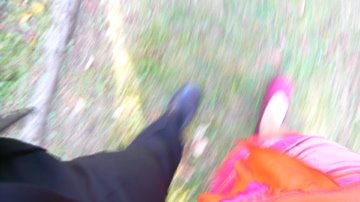In physics there is a very famous problem that heavily influenced the development of chaos theory. It's called the 'three-body problem', where you have completely deterministic projectories of bodies constrained by Newtonian laws. For example, if you have two bodies interacting, through gravity for example, everything is calculable and foreseeable. If you know where they are in relation to each at one moment, you can project a path and figure out where they were at any given moment in the past, or at a time in the future. But if you have three of them together what happens is that a margin of unpredictability creeps in. The paths can't be accurately determined after a point. They can turn erratic, ending up at totally different places than you'd expect. What has happened? How can chance creep into a totally deterministic system? It's not that the bodies have somehow broken the laws of physics. What happens is interference, or resonation. It's not really discrete bodies and paths interacting. It's fields. Gravity is a field - a field of potential attraction, collision, orbit, of potential centripetal and centrifugal movements. All these potentials form such complex interference patterns when three fields overlap that a measure of indeterminacy creeps in. It's not that we just don't have a detailed enough knowledge to predict. Accurate prediction is impossible because the indeterminacy is objective. So there's an objective degree of freedom even in the most deterministic system. Something in the coming-together of movements, even according to the strictest of laws, flips the constraints over into conditions of freedom. It's a relational effect, a complexity effect. Affect is like our human gravitational field, and what we call our freedom are its relational flips. Freedom is not about breaking or escaping constraints. It's about flipping them over into degrees of freedom. You can't really escape the constraints.
(Aus Brian Massumi: Navigating Movement)
Montag, 28. Dezember 2009
Abonnieren
Posts (Atom)

